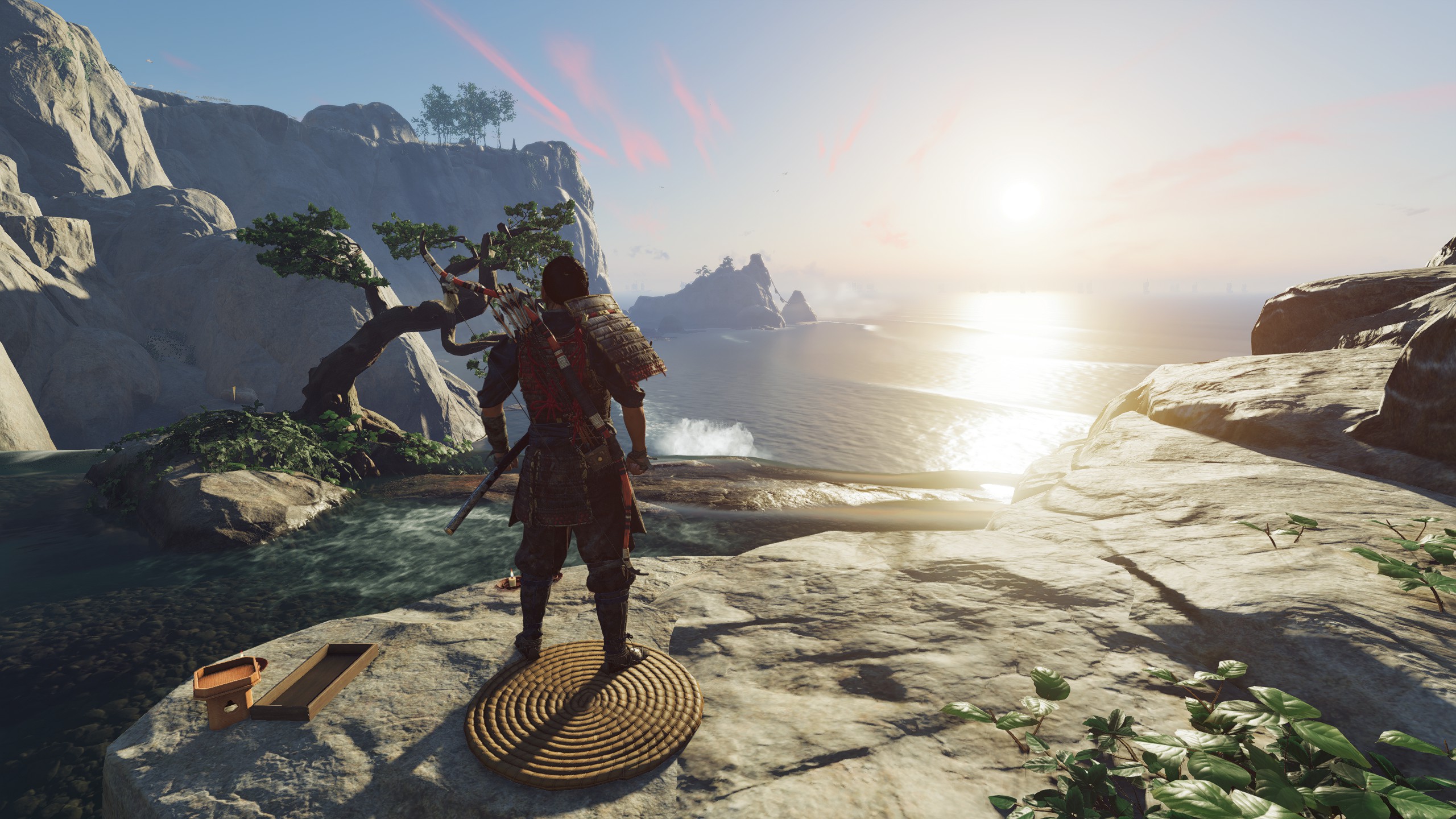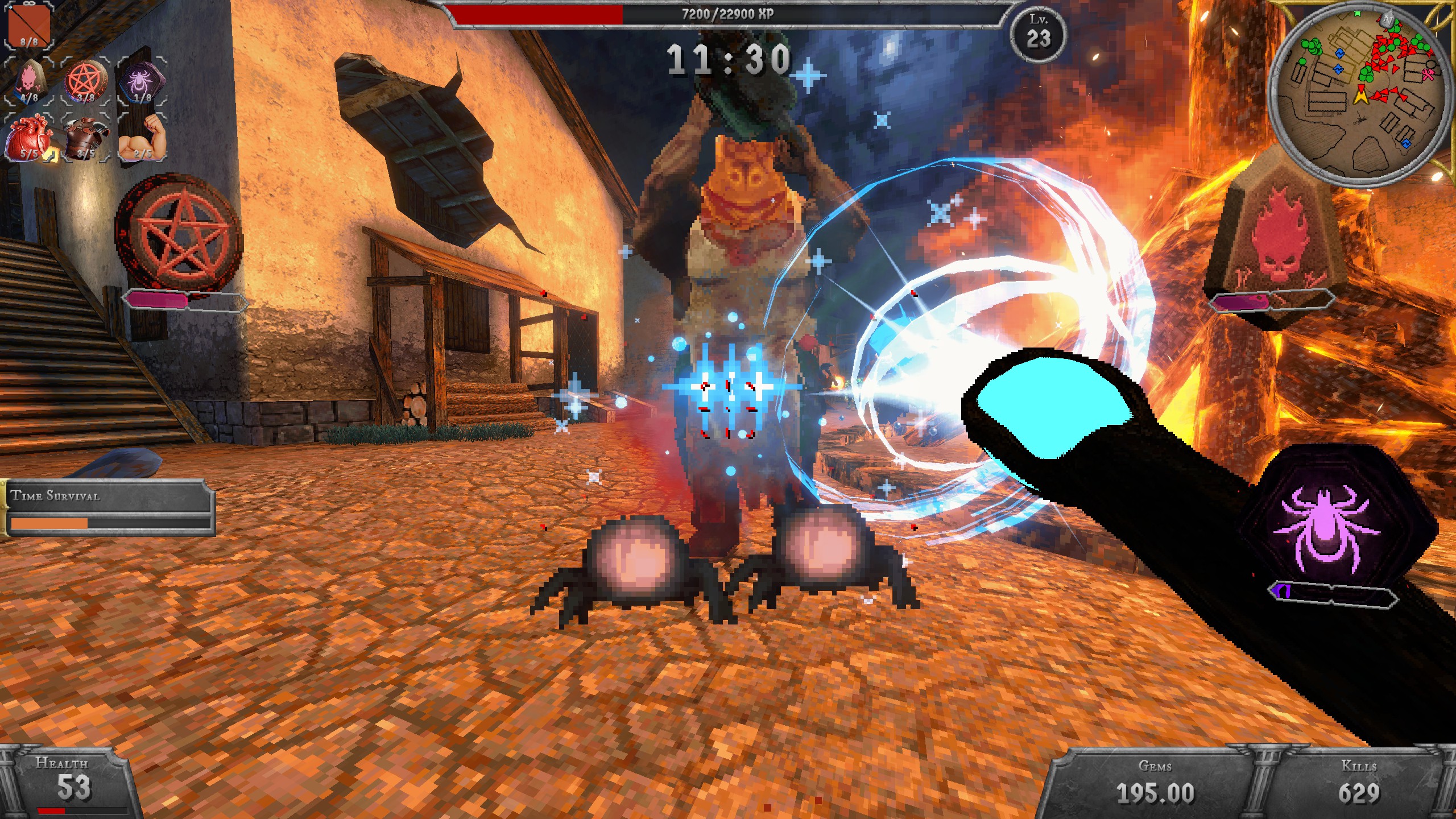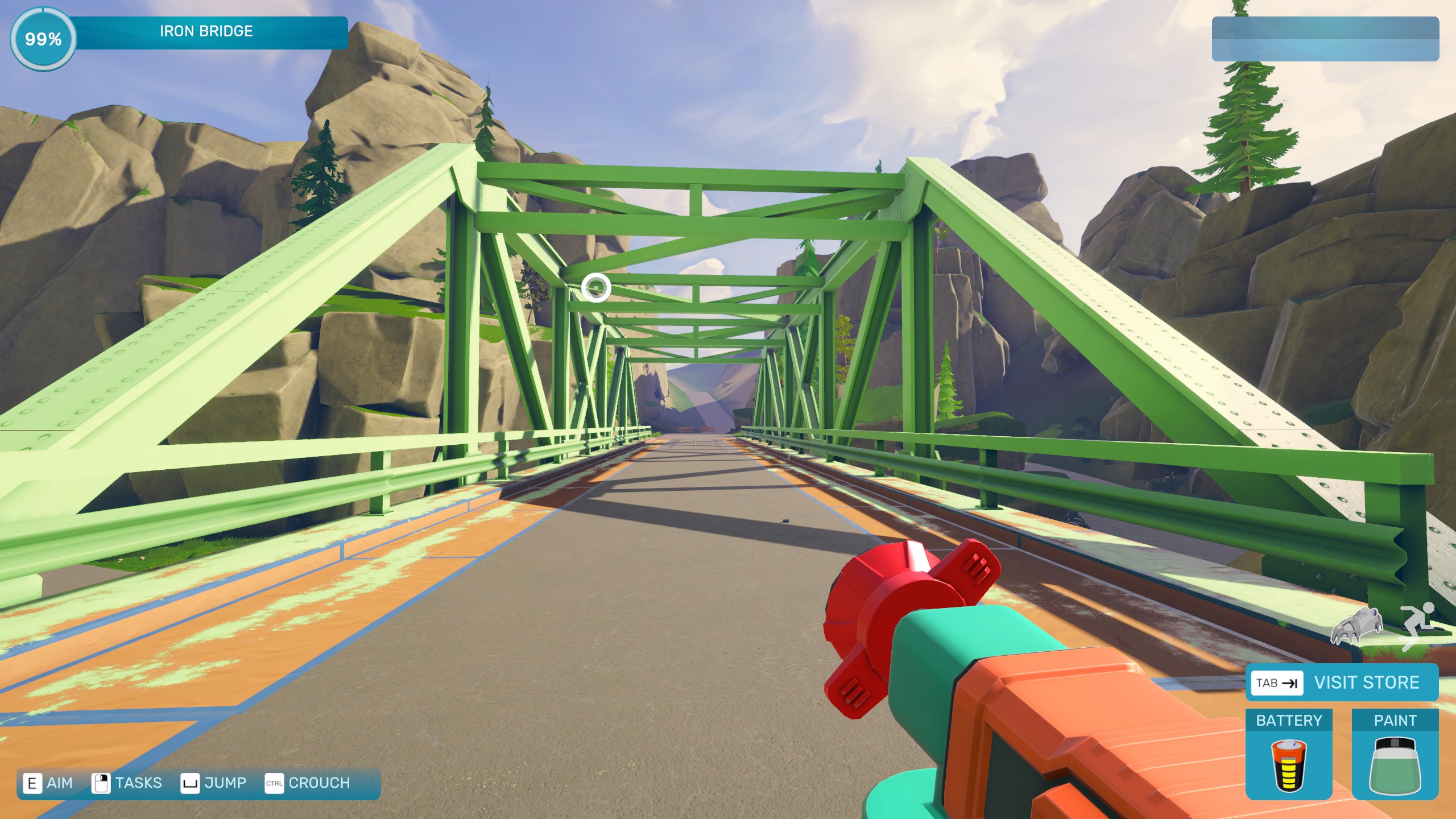Another PlayStation exclusive has landed on PC. Developer Sucker Punch cut its teeth on games in the Infamous series beforehand and their familiarity with open-world games definitely shows in Ghost of Tsushima. In most ways the game is almost perfunctory. Large swaths of empty nature give way to repeated challenges that grant upgrades. In almost all ways it’s a very familiar, safe open world game, much like Horizon: Zero Dawn. But what sets it apart is quality. From the writing and visuals to the gameplay and pacing, there’s much to enjoy about the game. Plus the port is of excellent quality, making this the best way to play a great game.
Ghost of Tsushima has a very familiar premise. Your main character’s home has been invaded and it’s your job to liberate it by gaining allies. In this instance, you’re a samurai on the Japanese island of Tsushima, the small island that sits between Southern Japan and South Korea. It’s been invaded by Mongols and has to be freed via lots of hacking, slashing, and stealth assassinations. The game is very similar to the recent Assassin’s Creed games, albeit considerably less bloated and with notably better combat, which takes a lot of notes from Sekiro and Nioh. As such, the game is very much a collection of its influences.
Despite the familiarity of the narrative trappings, the writing is fairly strong (which should come as no surprise to fans of Sucker Punch’s other games,) with excellent cutscenes and an interesting story structure divided into acts that all have their own story threads. Story missions are added to the map once they’re unlocked, but other things either need to be come across by filling out the map via traveling or by liberating enemy bases, which maps out a section automatically. This does incentivize exploration, though, as the question marks don’t appear without doing so, unlike in Assassin’s Creed and The Witcher III.
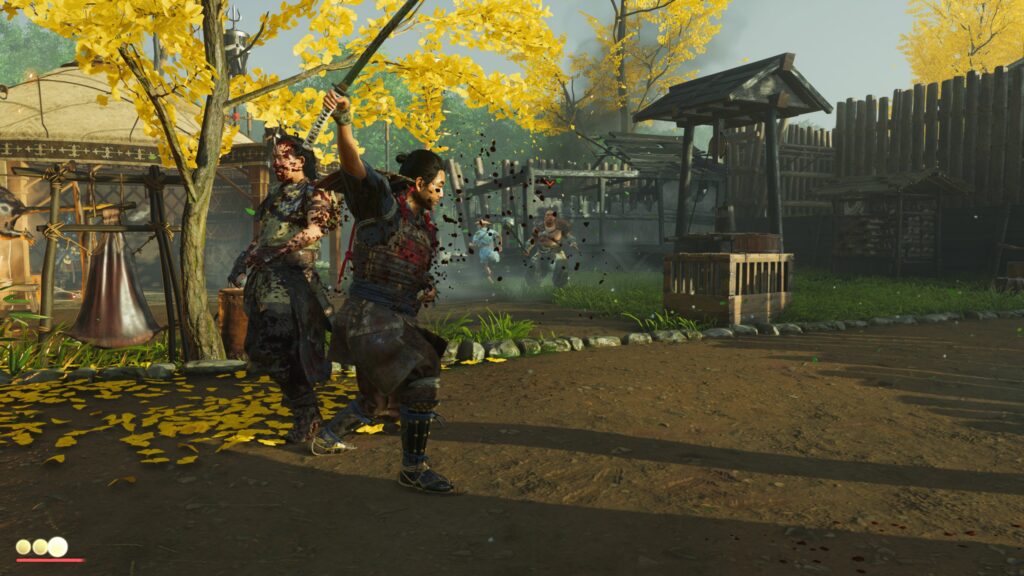
The combat in Ghost of Tsushima is more demanding than most broad open world games such as this. Mashing the attack button will rarely get you anywhere, so you instead need to deflect enemy attacks and wait for openings. You have access to four stances you can switch between at will, that all have their own strengths. Such as a stance useful for breaking an enemy’s guard or one that’s better for handling foes with large weapons. It’s not the most complex or deep system in the world, but it definitely allows for some skilful playing that, most importantly, succeeds at making the game actually feel like you’re playing as a samurai.
Speaking of which, one of the game’s most unique permutations is that, upon approaching unaware enemies, you can call them out and a showdown will take place. This allows you to take foes out instantly, provided you press the buttons at the right time. It’s as satisfying as it is appropriately cool. There’s also stealth, but it’s not played up here as much as it is in an Assassin’s Creed game. Your player character is, of course, a samurai and not a ninja, so this makes sense. But the sneaking just doesn’t have all that much depth to it. It doesn’t help that the enemy AI is quite observant, until you go into tall grass and it loses you, of course.
As the game’s map is large, you’ll be getting around on horseback. Sprinting on your horse also unfortunately has a lot of screenshake applied which cannot be disabled, much to my chagrin. There are a great many actual side quests in the game with their own stories, as well as repeated challenges that grant upgrades. You have to do a bamboo-cutting minigame by pressing increasingly demanding series of buttons to unlock more resolve uses and follow foxes to shrines to unlock additional charm slots. Resolve is generated by fighting and assassinations and lets you heal and use finishers and the like.
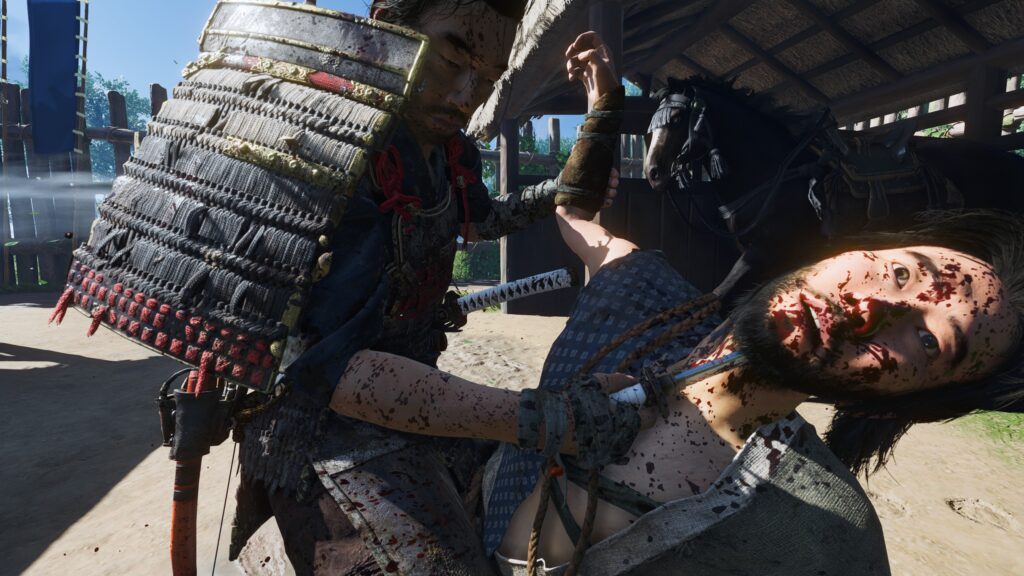
The world of Ghost of Tsushima can feel barren, but it’s also absolutely gorgeous, with terrific use of environmental effects that give the game a highly stylised, unique look. Seeing all the foliage blow in the wind, accompanied by particles is really something else. The game runs very well too, as I got high framerates without much effort. Using AMD’s frame gen feature gave me a rock solid 120 fps as well. All of this comes together to make for a polished game with a fantastic port that gave me few issues outside of the occasional crash. The game autosaves with regularity, so I only lost seconds of progress when this happened.
Anyone burnt out on open world games can probably safely ignore Ghost of Tsushima, as it’s very standard in many ways. However, it’s so fun and incredibly well done that anyone outside of that group will likely find something to enjoy here as long as they like katana battles and the idea of running around Japan as a samurai. It might not be the most innovative game ever, but it’s definitely one of the more solid open world games out there.
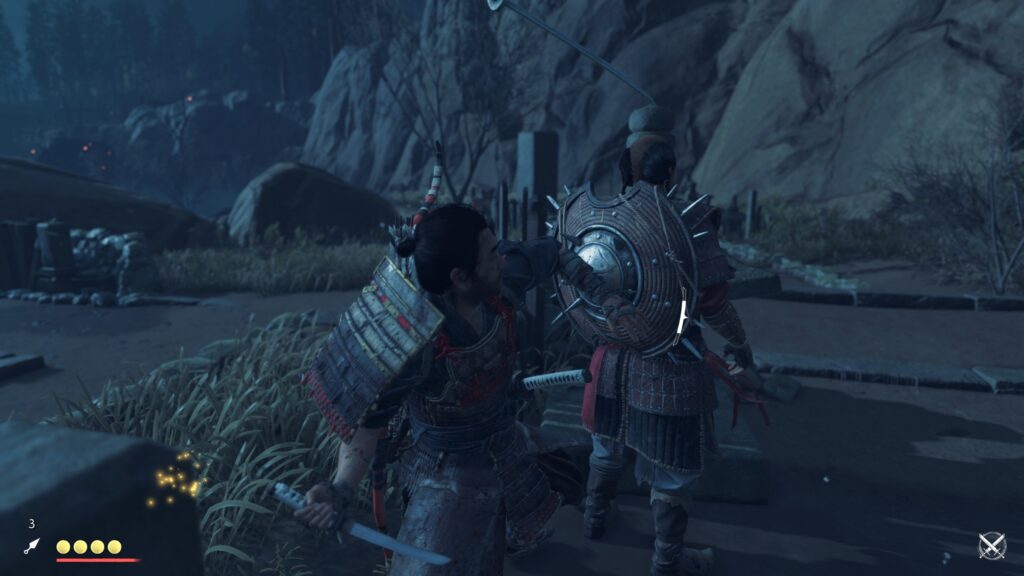
Ghost of Tsushima Director's Cut: Derivative but as fun as it is impeccably polished, Ghost of Tsushima is still a very entertaining open world game for anyone that wants to get into katana battles as a samurai. – Andrew Farrell
Check out more of our latest reviews:
Shin Megami Tensei V: Vengeance PC review – Emphasis on “rebirth” |

